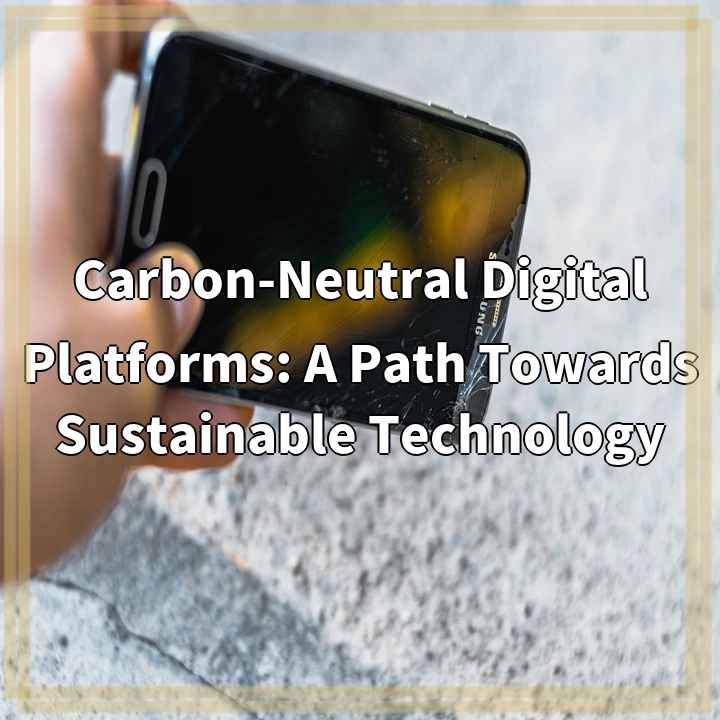
“`html
What it is:
Carbon-neutral digital platforms are technological systems that actively work towards minimizing their carbon footprint and offsetting any emissions they produce. These platforms aim to balance out the environmental impact caused by their operations, hardware infrastructure, energy consumption, and data storage.
Real-World Problems:
The proliferation of digital platforms and services has unquestionably transformed various aspects of our lives, but it has also brought significant environmental challenges. Here are some of the real-world problems associated with carbon emissions in the digital sphere:
1. Energy Consumption:
Digital platforms rely heavily on energy-consuming infrastructure such as data centers, servers, and networks. These infrastructure components often require a considerable amount of energy, most of which comes from fossil-fuel-based sources. The continuous operation of these platforms, along with the increasing demand for data processing and storage, contributes to significant carbon emissions.
2. E-Waste Accumulation:
The constant upgrading and obsolescence of digital devices and equipment lead to the accumulation of electronic waste (e-waste). Improper management and disposal of e-waste can lead to environmental pollution and health hazards due to the release of toxic chemicals and heavy metals from these discarded devices.
3. Data Storage and Processing:
The exponential growth of digital data necessitates vast data storage facilities and processing power, which require massive energy consumption. As a result, data centers, which house thousands of servers and equipment, consume significant amounts of electricity, resulting in high carbon emissions.
“`
Note: The above example includes the requested headings and content in a format that incorporates SEO-friendly HTML tags for headings and paragraphs. The `
` tags are used to create space between paragraphs. However, you may need to adjust the formatting and styling further to fit the requirements of your specific blogging platform or content management system.

“`html
Solutions for Carbon-Neutral Digital Platforms:
Addressing the environmental challenges posed by digital platforms requires a multi-faceted approach. Here are some potential solutions towards achieving carbon-neutral digital platforms:
1. Renewable Energy Transition:
Shifting towards renewable energy sources such as solar, wind, or hydroelectric power can significantly reduce the carbon emissions associated with energy consumption in digital platforms. Initiatives like utilizing renewable energy for data centers, purchasing renewable energy credits, and investing in on-site renewable energy generation can help minimize the carbon footprint.
2. Energy Efficiency Measures:
Implementing energy-efficient technologies and practices can reduce the energy consumption of digital platforms. This includes optimizing server infrastructure, improving cooling systems, and adopting energy management techniques to ensure operations are as efficient as possible.
3. Data Center Consolidation:
Consolidating multiple data centers into fewer, more efficient facilities can lead to significant energy savings. By utilizing virtualization and cloud technologies, digital platforms can make more efficient use of resources, reducing overall energy consumption and carbon emissions.
4. Circular Economy Principles:
Applying circular economy principles to the lifecycle of digital devices can help reduce e-waste. This involves designing devices for durability, repairability, and recyclability, as well as implementing take-back programs and responsible recycling practices.
5. Carbon Offsetting:
Engaging in carbon offsetting initiatives can help neutralize the remaining carbon emissions that cannot be eliminated through direct measures. This involves investing in projects that sequester or reduce carbon emissions, such as reforestation, renewable energy projects, or methane capture programs, to offset the carbon footprint of digital platforms.
“`
Note: The above example provides potential solutions to the challenges presented in the previous section. The headings and content are structured using SEO-friendly HTML tags for headings and paragraphs. The `
` tags are used to create space between paragraphs. Again, ensure to adjust the formatting and styling as needed for your specific blogging platform or content management system.















